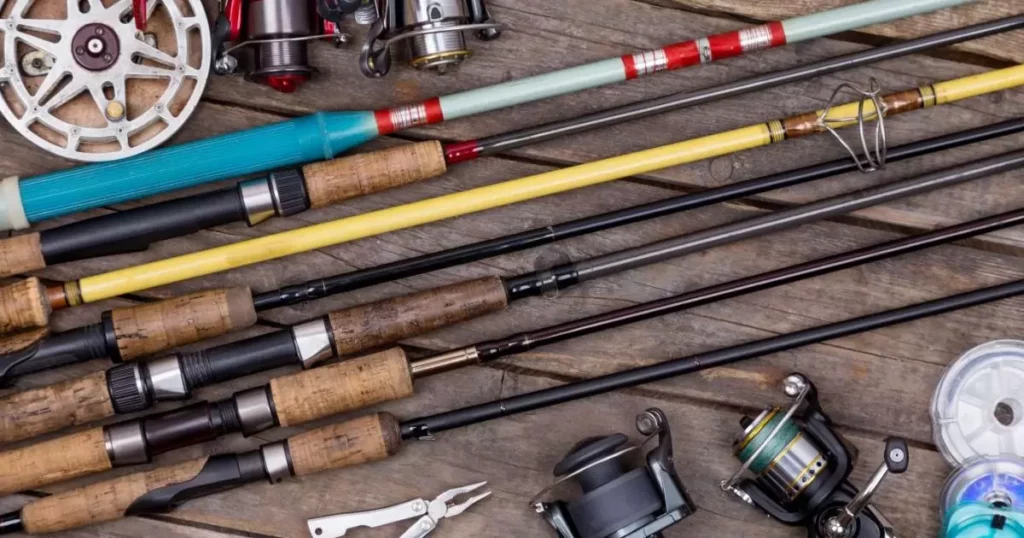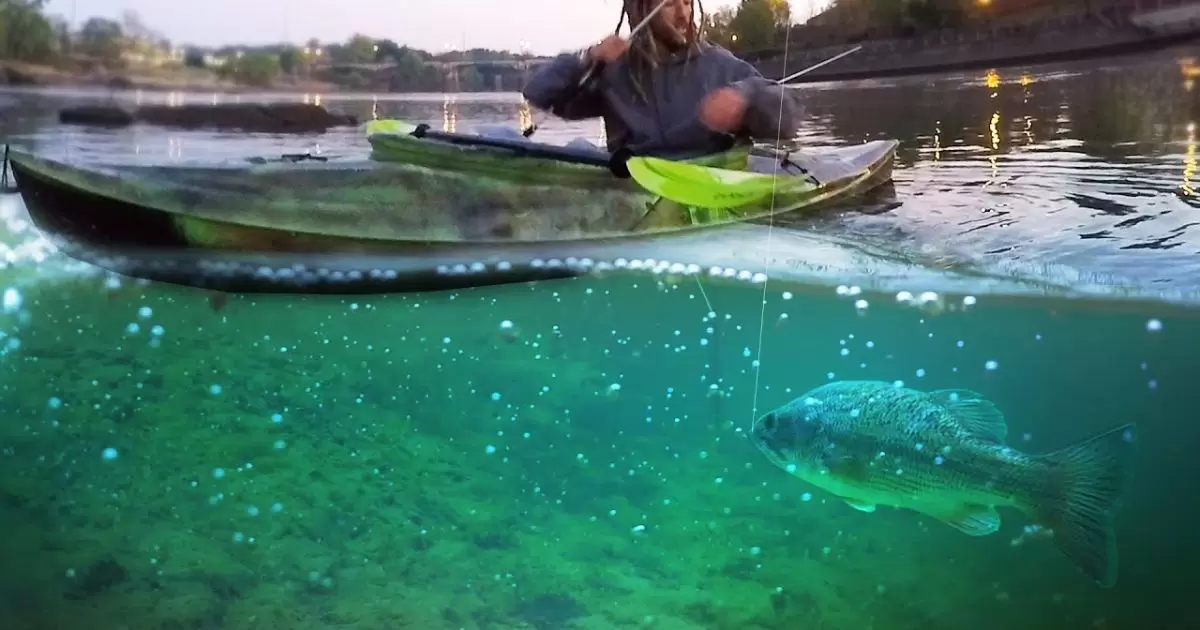Topwater bass fishing is a thrilling and rewarding technique involving lures on the water’s surface to entice bass to strike. To engage in this exciting form of angling, one must consider various factors that influence the timing of the topwater season.
As the sun’s rays become more intense, and temperatures rise, bass become more active and move towards the shallower waters. This marks the beginning of the topwater bass fishing season. When does topwater bass fishing start? The specific timing can vary from one location to another, influenced by local climate and water conditions. Still, generally, it kicks off during the late spring and continues through the summer months.
In this article, we’ll delve into the factors that affect the start of the topwater bass fishing season, such as water temperature and daylight hours. We’ll also discuss the various lures and techniques you can employ to increase your chances of a successful outing. So, whether you’re a seasoned angler or just starting out, read on to discover when and how to make the most of this thrilling angling experience.
Factors Influencing the Start of Topwater Bass Fishing
The start of topwater bass fishing is influenced by a combination of key factors. One crucial factor is water temperature. As spring transitions into summer, the water temperature rises, typically reaching, which triggers increased bass activity near the surface. Daylight hours also play a significant role, as longer days provide more opportunities for bass to feed near the surface, particularly during dawn and dusk when they are most active. The interplay between these factors dictates when topwater bass fishing season begins, making it essential for anglers to closely monitor local conditions and adapt their strategies accordingly.
Water Temperature
One of the primary factors affecting when topwater bass fishing begins is water temperature. Bass are cold-blooded creatures, and their activity levels are closely tied to the water’s temperature. As the water warms up, bass become more active and move towards shallower areas to feed, making them more receptive to topwater lures.
The ideal water temperature for topwater bass fishing usually ranges from the mid-60s to the mid-70s Fahrenheit (around 18-24 degrees Celsius). As the water temperature climbs within this range, the likelihood of bass striking topwater lures increases. It’s important to note that this range can vary by location and even by the specific bass species you’re targeting.
Daylight Hours
Another significant factor is the number of daylight hours. Longer daylight hours in the late spring and summer provide more opportunities for bass to feed near the surface. The extended daylight gives anglers a broader window to utilize topwater lures effectively. As spring transitions into summer, the days grow longer, and this extended daylight becomes a key indicator that topwater bass fishing season is in full swing.
Optimal Times for Topwater Bass Fishing
Understanding the optimal times during the day for topwater bass fishing can make a significant difference in your success. Bass exhibit different feeding behaviors based on the time of day.
Dawn and Dusk
Many anglers consider dawn and dusk to be prime times for topwater bass fishing. During these low-light conditions, bass tend to be more active and more likely to strike at surface lures. The reduced visibility for bass allows them to ambush prey more effectively, which makes them more responsive to topwater presentations.
Midday and Overcast Conditions
While dawn and dusk are often preferred, topwater bass fishing can still be productive during midday, especially when the sky is overcast. On cloudy days, bass feel more secure near the surface since the low light levels mimic dawn and dusk conditions. This makes them more likely to respond to topwater lures, even when the sun is high in the sky.
Essential Gear and Lure Selection
To make the most of your topwater bass fishing adventures, having the right gear and selecting the appropriate lures are critical. Let’s explore the essential equipment and lure types that can help you land that trophy bass.
Rods and Reels
For topwater bass fishing, choosing the right rod and reel is crucial. A medium to medium-heavy spinning or baitcasting rod is typically preferred. These rods provide the necessary sensitivity and strength to handle the powerful strikes that often accompany topwater action.
Reels with a high gear ratio are ideal for quickly picking up slack lines when a bass strikes. This is important in ensuring a solid hookset.
Lines and Leader Material
When it comes to line selection, monofilament, fluorocarbon, or braided lines can be used for topwater bass fishing. Monofilament lines float, making them suitable for topwater presentations. Fluorocarbon has low visibility and is nearly invisible underwater, while braided lines offer excellent sensitivity.
Leader material, such as fluorocarbon or monofilament, is advisable if you’re using braided mainline. It provides some level of invisibility and abrasion resistance near the lure.
Topwater Lure Types
There is a wide variety of topwater lures to choose from, and each has its unique action and presentation style. Selecting the right lure can make a significant difference in your success.
Popper Lures
Popper lures feature a concave mouth that creates a distinctive popping sound when retrieved. They imitate wounded or struggling prey, making them excellent choices for enticing aggressive strikes from bass. The stop-and-start retrieval method can be particularly effective with poppers.
Walking Baits
Walking baits, also known as Zara Spooks, have a side-to-side “walking” action when retrieved. This action mimics a wounded baitfish struggling on the surface. Walking baits are excellent for drawing bass from a distance and triggering explosive strikes.
Buzzbaits
Buzzbaits are topwater lures with a spinning blade that creates a buzzing or clicking sound as they move through the water. This noise attracts the attention of bass and can trigger aggressive strikes. Buzzbaits are effective in covering a lot of water quickly.
Frogs and Toads
Frog and toad lures are soft plastic or rubber imitations of amphibians. They are designed to be fished in and around vegetation, mimicking the movement of these creatures. These lures work best in areas with dense aquatic vegetation where bass often hunt for frogs and other prey.
Topwater Bass Fishing Season Guide
To provide a quick reference for anglers, here’s a table summarizing the factors influencing the start of topwater bass fishing season, as well as the optimal times and essential gear for this exciting angling technique.

| Factors Influencing Start | Optimal Times for Fishing | Essential Gear |
| Water Temperature | Dawn and Dusk | Rods and Reels |
| Daylight Hours | Midday and Overcast | Lines and Leader Material |
| Topwater Lure Types |
This table provides a summarized guide to help anglers understand the factors influencing the start of topwater bass fishing, the best times to fish, and the essential gear and lure types to use.
FAQs
When does topwater bass fishing season typically begin?
Topwater bass fishing season typically begins during late spring and extends through the summer months, varying by location and local conditions.
What are the main factors influencing the start of topwater bass fishing?
The start of topwater bass fishing is influenced by factors like water temperature, daylight hours, and local conditions.
What are the optimal times of day for topwater bass fishing?
The optimal times for topwater bass fishing are during dawn and dusk when bass are most active. Midday and overcast conditions can also be productive.
Which lures are recommended for topwater bass fishing, and how do they work?
Recommended topwater lures include poppers, walking baits, buzz baits, and frog and toad imitations, each with its unique action and purpose.
How can I select the right gear for topwater bass fishing, including rods, reels, and lines?
To select the right gear for topwater bass fishing, consider using medium to medium-heavy rods, high gear ratio reels, and lines like monofilament, fluorocarbon, or braided lines. Leader material may be needed, depending on the line choice.
Conclusion
Topwater bass fishing is a thrilling pursuit that offers both challenge and reward for anglers. By considering factors like water temperature and daylight hours, and by using the right gear and lures, you can increase your chances of a successful outing. Keep in mind that the timing of the topwater bass fishing season can vary based on location, so local knowledge and experience can be invaluable.
Whether you’re casting poppers, walking baits, buzz baits, or frogs, the surface action can provide unforgettable moments and the opportunity to land that trophy bass. So, get out on the water, enjoy the excitement of topwater fishing, and make the most of this incredible angling experience.

